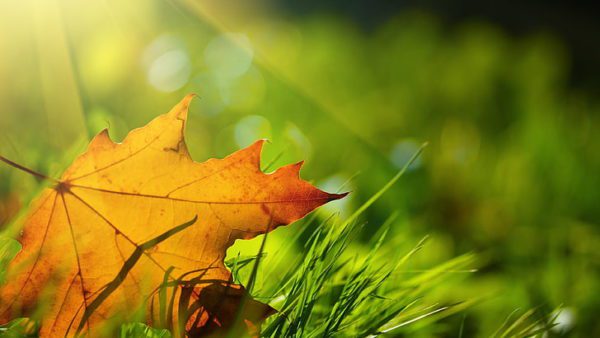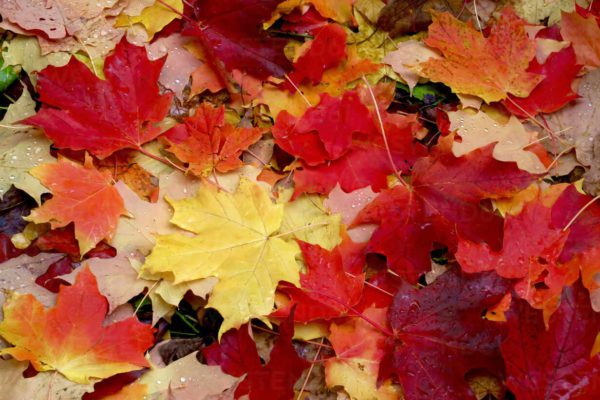 by Heidi Smith
by Heidi Smith
As an American OBOD Ovate, I find the study of Ogham challenging, in part because some of the trees that are so important to me are missing. For the modern druid in a global world, the correspondences must resonate. Determined to add local tree heroes to my Ogham study, I went to my favorite forest with the intent of finding the species that is vitally unrepresented. It came as somewhat of a surprise (although it shouldn’t have) when a Maple tree literally made me turn around as I passed by and invited me to sit for a chat.
There are over 100 species of Maple trees and the Field Maple is native to the United Kingdom, but I am particularly fond of the Sugar Maple, an iconic tree here in New England. In spring she gives her sweet sap, in summer her cooling shade, in autumn her glorious color and in winter her wood makes a nice warm fire. Here are some facts about this grand old tree.
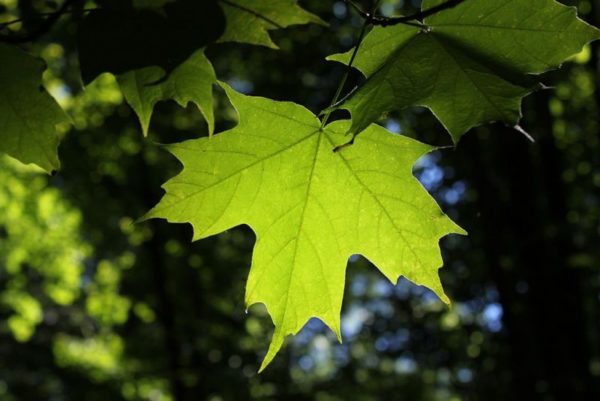 The Facts, and Nothing But
The Facts, and Nothing But
Age: 300- 400 years.
Dimensions: 70-100’ in height and 2-3’ in diameter.
Flowers: Lovely yellowish, long-stemmed flowers that bloom in drooping bell-shaped clusters from April into June.
Bark: Gray-brown trunk with rough grooves that loosen and grow more interesting and magical as the tree ages.
Healing: Liver and kidney tonics, diarrhea and gynecologic problems. Indigenous North American tribes used it to treat sores, coughs, and even gonorrhea.
Other uses: Soap, dye (from the bark), baseball bats, furniture, crates and musical instruments. Pemmican, a staple for natives of North America and the early colonists, was made from sap mixed with berries, nuts and dried meat. Maple syrup, the most famous and tasty product of the Sugar Maple, requires an entire season to make and it takes 32 gallons of tree sap to make 1 gallon of syrup. Each tree yields anywhere from 5-60 gallons of sap per year.
Wildlife: Sugar maples are commonly browsed by white-tailed deer, moose and snowshoe hare. Squirrels feed on the seeds, buds, twigs and leaves, and the copious canopy of the tree provides plenty of space for nesting birds.
Conservation threat: Acid rain, logging and habitat loss.
Planetary energy: Jupiter
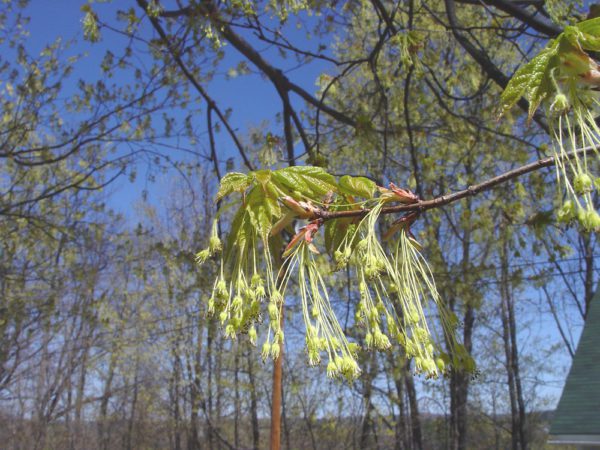 Personal Gnosis
Personal Gnosis
It is late June when I sit under this old tree, partially dead and decomposing. The part of her that thrives reaches high into the sky with a bright green canopy of 5-lobed leaves. The side of her that is turning into compost already sprouts a leafy fern and it is a fallen part of her trunk that provides my moss-covered seat. Beside me scrambles a juvenile Eastern Red-Spotted Newt. I adjust my thinking that part of the tree is dying or dead. This tree creates its own mini-habitat for life, even as it begins to die. This is a tree always willing to nurture those around her. In thinking about the many Sugar Maples I’ve come across and photographed, I am always struck by how glorious they are in old age. Their bark and trunks go gnarly and the colors change due to weather, age, fungi action and lightning strikes. Her youthful maidenhood changes into that of a wise Crone. (I guess I was pretty convinced it was a goddess or mother tree) From this transformation and continued ability to nourish her place in the forest, I learn the lesson of aging gracefully. Her legacy is the continuation of forest life. Like the changing colors of the foliage season that we (and millions of tourists) treasure, she reminds us that life itself is a constant cycle of seasonal changes. From infant to youth to adult to elder, we also traverse the wheel of life.
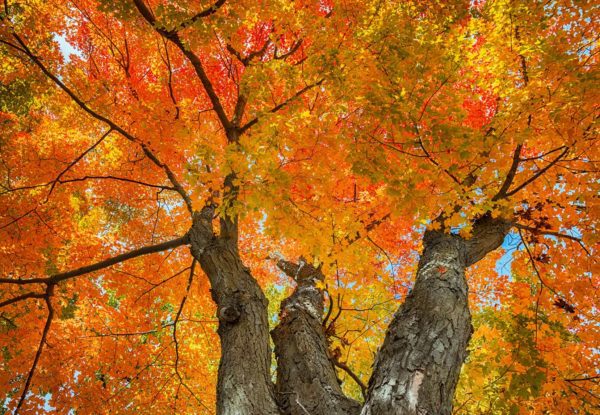 Divination
Divination
At home, I research what others have identified as the symbolic or divinatory meaning of the Sugar Maple. The list includes: Nwyfre, or life force, effort, flow, seeking wisdom and guidance through dreams, changes, endurance, protection, beauty and expansion. All of these make sense to me based on my experience with the Maple in my local forest.
Storytelling
Long before the Europeans came to the shores of North America, the Abenaki lived in the forests, meadows and rivers of this place. They honored the gift of the Maple Tree- its sweet syrup.
Gluskabe, Creator’s (Tabaldak) first son, wandered the earth, looking after the humans and reporting back to Tabaldak of the affairs of Turtle Island. One day, he arrived in a village that looked abandoned and left in a terrible state of dilapidation. However, he heard the moaning sounds of people and went deeper into the forest. Under a stand of Maple trees, he found the villagers, lying under the maple trees, letting the thick, sweet syrup of the trees drip into their mouths. They had grown fat and lazy with the ease of drinking the tree sap.
Gluskabe told them to get up and get busy, clean their village and get the fires burning again. But they only laughed and said they were busy enjoying the gift of the Maple tree.
Gluskabe reported back to Tabaldak, who decided that the villagers needed to remember the Creator’s ways and instructed Gluskabe to fill the trees with water, to dilute its thick sweet sap. Gluskabe did as he was told and when the Maple sap became thin and less sweet, the people began to complain to Gluskabe.
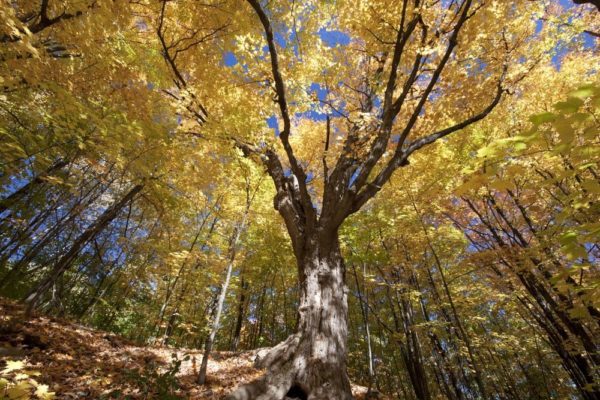 As Tabaldak had told him, he told the villagers, “This is the way it is. From now on, the sap will only flow thick just before spring. You will have to work much harder for the gift of Maple. You will make birch buckets to collect the sap. You will need to collect and chop wood to make the fires to boil the sap on. Only in this way, will you drink of the sweet syrup.” Because of this new way, they would always remember the need to work hard for Creator’s gifts.
As Tabaldak had told him, he told the villagers, “This is the way it is. From now on, the sap will only flow thick just before spring. You will have to work much harder for the gift of Maple. You will make birch buckets to collect the sap. You will need to collect and chop wood to make the fires to boil the sap on. Only in this way, will you drink of the sweet syrup.” Because of this new way, they would always remember the need to work hard for Creator’s gifts.
Another way of saying this is that nothing worth having comes easy. As children of Tabaldak, we must give our best and honor the gifts of our Creator.
(This is my re-telling of this Abenaki story of the gift of the Maple Tree, based on a version printed on firstpeople.us )
The Sugar Maple is so beautiful, so wise and so giving that it seems only proper to create a page for her in our OBOD resources. It is a privilege to sit with her, learn from her and tell her story; a story that inspires the Bard in me to craft a poem in her honor.
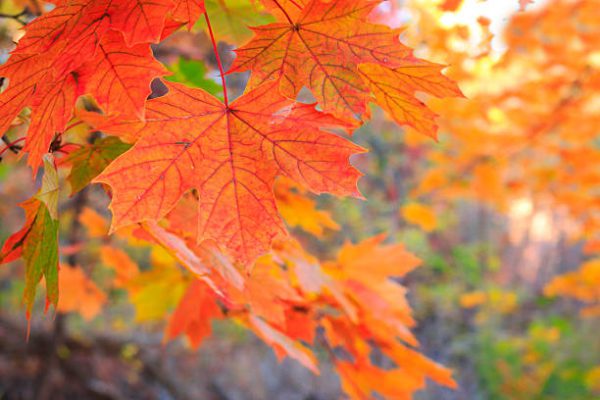
The Gifts of Grandmother Sugar Maple
From her roots along the stream
To her power of shaping dreams
Grandmother Maple is a blessing and a gift.
From maidenhood to Crone
The forest is her Home
Her tunic changes color with the seasons.
In spring her sap will flow
In buckets hung during the snow
Her lifeblood boils a syrup sweet.
In summer she is shade
In a green-lit forest glade
While birds sing sweetly from their nests.
In fall she is glorious
Blazing color in forest arboreous
Delighting and inspiring with her beauty.
In winter warms the hearth
With wood grounded in earth
Comfort for the hibernating season.
Literary References
A Magical Compendium of Eastern North American Trees ~ Dana O’Driscoll
The Meaning of Trees ~ Fred Hageneder
Peterson Field Guides: Eastern Trees ~ George A. Petrides/ Janet Wehr
